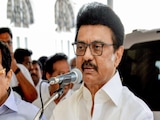The WHO Pandemic Agreement, an accord designed to address the mistakes made in handling COVID-19, is being submitted for adoption Tuesday at the World Health Assembly.
The annual decision-making gathering of the World Health Organization's member states will consider the agreement, which took more than three years to negotiate.
The details of the agreement's central mechanism must still be negotiated by May 2026, after which it can be ratified by countries.
Here are the main points of the agreement, which has 35 articles.
Objective
The objective of the WHO Pandemic Agreement is "strengthening pandemic prevention, preparedness, and response".
Following the glaring inequity and deficiencies exposed in the world's handling of the Covid-19 pandemic, the agreement is guided by the principles of equity, solidarity and transparency.
It says public health decisions in the face of pandemics must be based on "the best available science and evidence".
Respect for the sovereign rights of states is also a key foundation, according to the text.
Prevention and surveillance
Countries must take progressive steps to strengthen their pandemic prevention and surveillance capacities.
Subject to resources, countries are called on to develop, reinforce and implement comprehensive national pandemic prevention plans.
They must bolster the prevention of emerging and re-emerging infectious diseases with early detection and control measures.
This would include things like routine immunisation, managing biological risks in laboratories, preventing antimicrobial resistance, and stopping the transmission of diseases from animals to humans.
Sustainable local production
The text calls for countries to take measures to ensure "more equitable geographical distribution and rapid scale-up of the global production of pandemic-related health products" like vaccines.
It also calls for more "sustainable, timely and equitable access to such products", and for countries to "reduce the potential gap between supply and demand during pandemic emergencies".
Technology transfer
The transfer of technology and know-how needed to produce pandemic-related health products, in particular to developing countries, had been a major sticking point during the negotiations.
Some wealthier countries, notably ones where such products are currently produced, rejected the idea that such transfers should be mandatory.
The agreed-upon text instead calls for transfers to be undertaken on "mutually agreed" terms.
It calls for the use of measures and incentives including licensing agreements and favourable conditions linked to things like financing and regulations to promote technology transfer.
It also aims to promote tech and knowledge transfer to recognised regional or global centres coordinated by the WHO.
Pathogen access, benefit sharing
The heart of the agreement is the proposed Pathogen Access and Benefit-Sharing System (PABS) -- a new platform allowing the swift sharing of pathogen data with pharmaceutical companies, enabling them to start work quickly on pandemic-fighting products.
Under PABS, countries will commit to sharing data rapidly on emerging problematic pathogens, while vaccines and other health products derived from accessing that information would be shared on a more equitable footing.
The text calls for participating manufacturers to make available to the WHO at speed "20 percent of their real-time production" of pandemic-related health products, including "a minimum threshold of 10 percent" in the form of donations, and the rest "reserved at affordable prices" for the UN health agency.
Any company can participate, even if its headquarters are in a country that is not a WHO member state.
The mechanism's details still need to be negotiated and put in an annex by May 2026. To achieve this, an intergovernmental negotiating group must begin meeting before July 15.
Once the annex is finalised and approved, the agreement can be opened for ratification by countries. The agreement enters into force after 60 ratifications.
Supply chain and logistics
In an attempt to smooth out the flaws exposed by Covid-19, a Global Supply Chain and Logistics Network will be set up for equitable, timely and affordable access to pandemic-related health products.
During pandemic emergencies, countries should prioritise sharing pandemic-related health products through the network to ensure equitable distribution based on public health risk and need.
The structure and operational modalities of the network are to be coordinated by the WHO.
(Except for the headline, this story has not been edited by NDTV staff and is published from a syndicated feed.)















